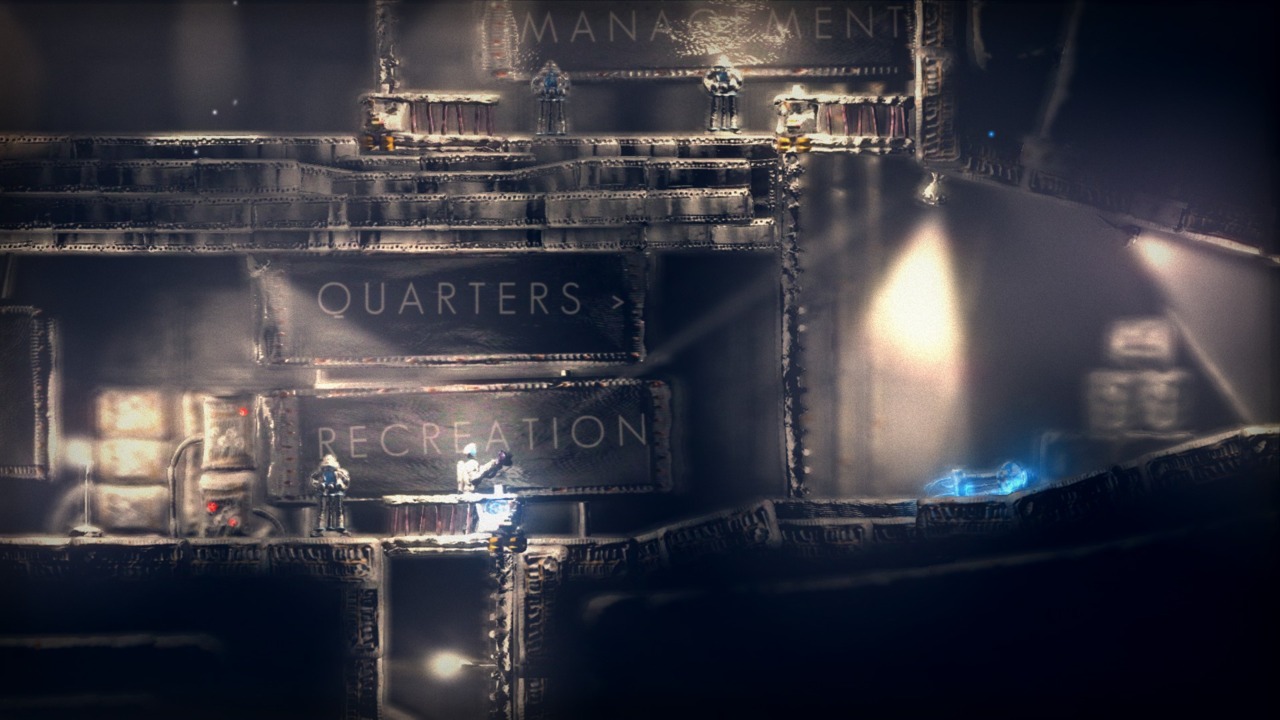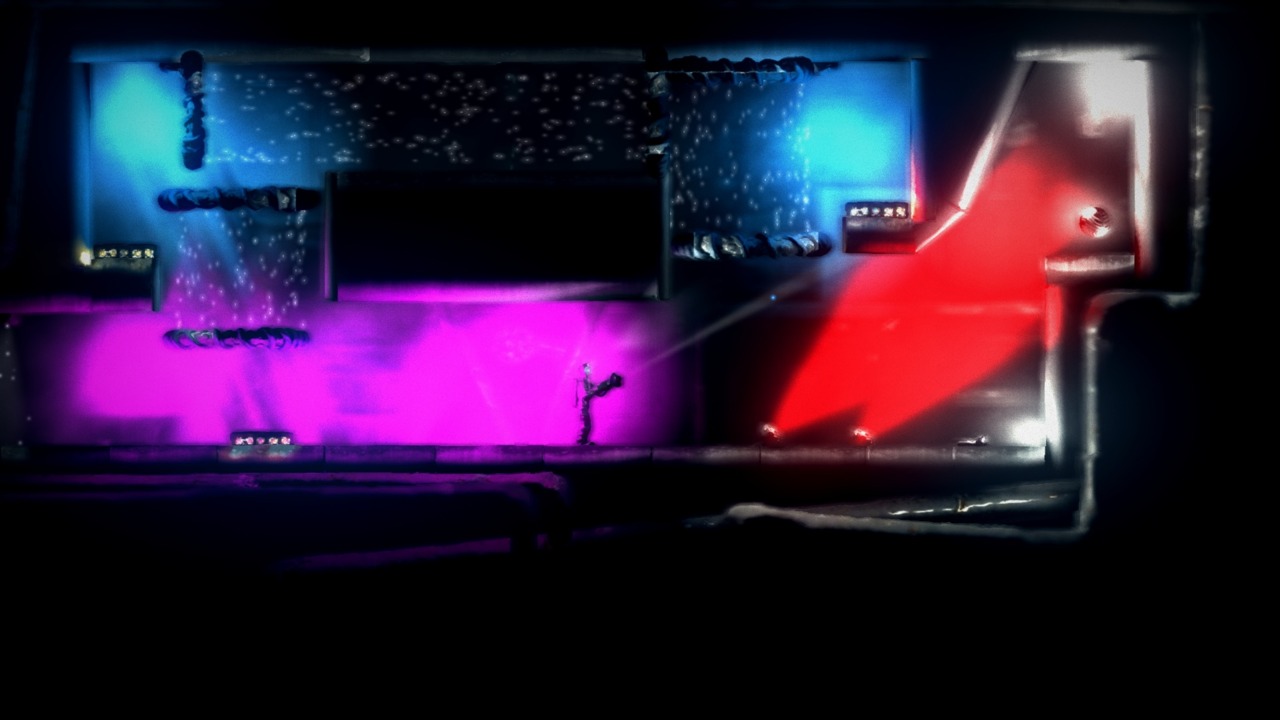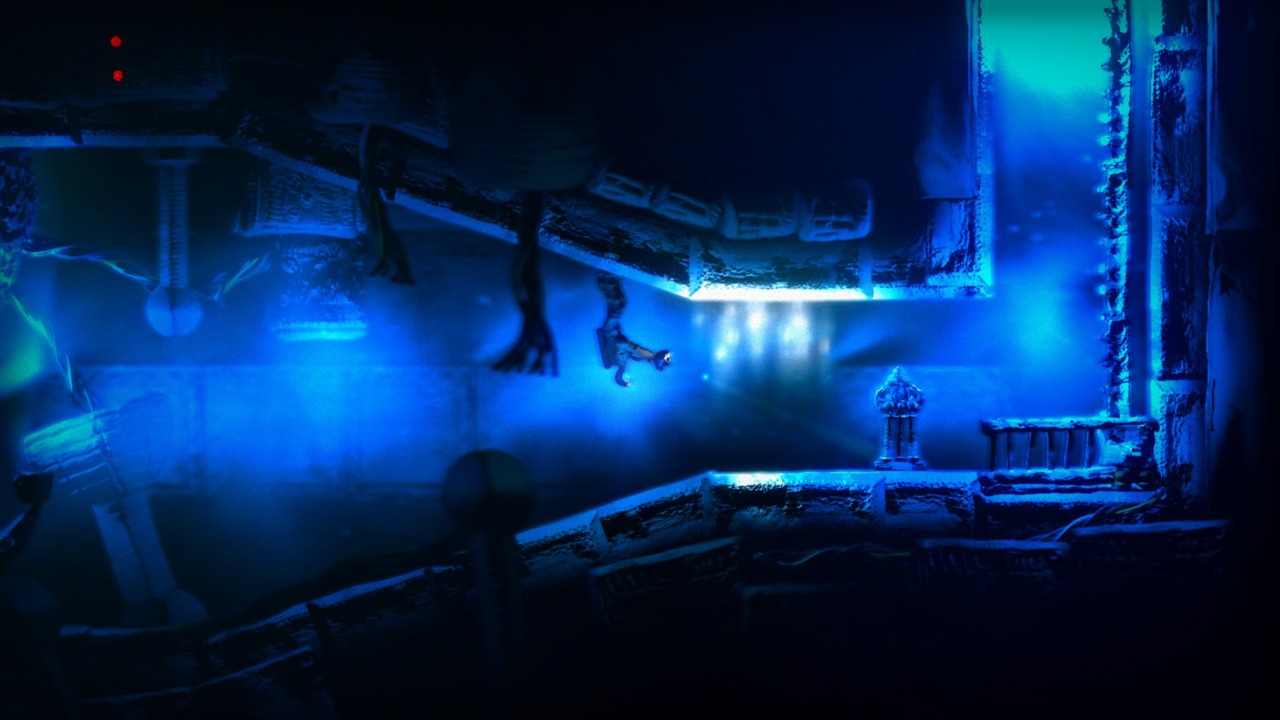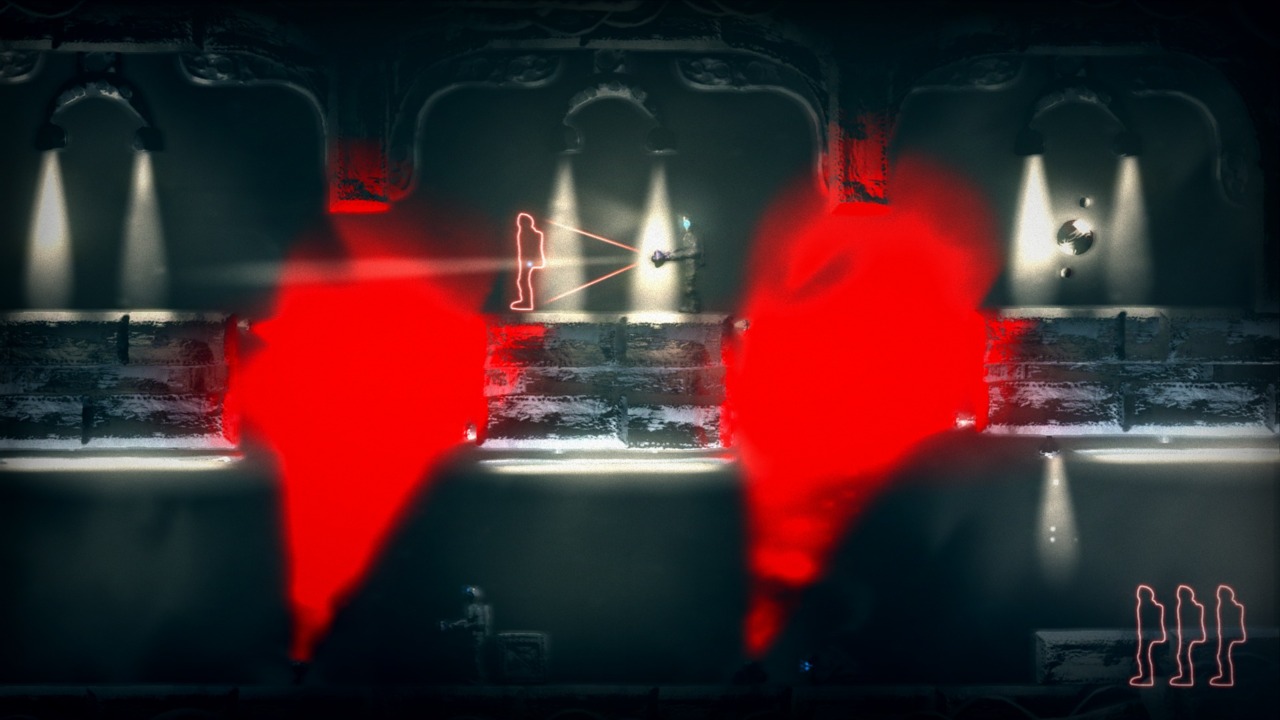What is a mind? Does a clone have a soul? These are big questions for a puzzle game to try to engage with, but The Swapper is a game that's willing to take a few risks. An atmospheric platformer from an independent Finnish developer, The Swapper takes some heavy themes and molds them into an engaging if short adventure that plays as well as it looks.

After you're dropped into the dimly lit 2D environment for the first time, there is a great sense of isolation. You won't be alone for long, though, because you can make yourself some new best friends. You are almost immediately given access to a handheld cloning device and the eponymous swapper--the object that makes the game more than just a simple puzzle-platformer. The cloning device does what you might expect: it lets you create a clone of yourself anywhere you have line of sight (you can't, for instance, create a clone through walls). Four of these clones can exist at a time, and all of them move the same ways you do. Move to the right, and your clones do the same. Jump and they jump. They exist like this until you touch them, absorbing them into the whole that is "you," or they die.
The swapper makes things more interesting, both in the narrative and in gameplay. It is a device that lets its user move its soul from one body to another…or does it? The plot of The Swapper, imparted by audio conversations and text entries you find throughout the game, explores whether or not any soul swapping is actually taking place--or if the soul even exists at all. It's a very philosophical tale that asks questions of belief, skepticism, science, and materialism, and it doesn't talk down to its audience when doing so.
Regardless of the metaphysical consequences, though, from a gameplay perspective, the swapper is invaluable. With a clear shot and a click of the left mouse button, you can transfer control from one body to another, allowing you to, in a way, warp around the environment and reach previously inaccessible areas. Using the swapper, things like large gaps and high platforms are not much of a problem. Simply drop a clone where you need to go, and then swap to it.

Things are complicated by the existence of colored lights scattered throughout the world. Areas covered in blue light prevent clone creation (though clones can walk into the light without issue), while red light blocks the swapper's beam, preventing you from jumping between clones. Purple light predictably has both downsides, making it a real pain to deal with. While there is no satisfying narrative explanation for why things work this way, these lights are one of your primary concerns in most puzzles in the game, and working around them is where you find most of the challenge.
Aside from lights, there are a few other wrenches thrown into the environment to keep puzzles fresh throughout The Swapper, including areas that involve reversing gravity on a clone-by-clone basis. With a few exceptions, none of these obstacles make the puzzles mind-crushingly difficult to solve, but they are usually tricky enough to make you feel clever for conquering them, and each puzzle is different enough from the one before it that things never get too monotonous. Therefore, the game strikes a good balance between being challenging enough to require work, but not too difficult to make it unapproachable.
One of the most immediately apparent aspects of The Swapper is how unique it looks. The creepy aesthetics were created in part with clay models, but this isn't the sort of claymation you would find in a Wallace and Gromit film. You might not even recognize the visuals as being made up of commonplace materials. But even if you don't recognize why things look the way they do, you will likely notice how striking they are. Great use of lighting helps set the mood and keeps things looking interesting, allowing for a lot of impressive imagery.

As you traverse these gloomy but beautifully crafted worlds, you notice the overall map filling up in a very Metroid-style manner, but those who yearn for that specific type of game shouldn't get their hopes up too high. While there is some exploration involved in moving forward, there is little in the way of backtracking, and the path remains fairly linear. Each room you find in the world serves as its own stand-alone puzzle, and such rooms are never terribly large, nor are they connected--everything you need to solve a puzzle is always right in front of you. What this progression format does, though, is give you freedom to solve certain puzzles in whatever order you choose. You need to complete every puzzle and collect every orb to see the game's ending, but you need to solve only a certain number to move past specific areas, allowing you to come back later if you need to. You won't be coming back with any new abilities to work with, but you may be able to look at the situation a little differently with knowledge you gain elsewhere.
As you make your way through the game's puzzles, you delve deeper into its philosophical plot. The story never gets in your way too much if you simply want a puzzle game without having to worry about narrative, but there are optional text entries you encounter that expand on events both past and present. While the story is full of interesting ideas and some thoughts that might make you go "Hmm," the plot has some confusing aspects and, as a linear story, can be a little underwhelming in the end. That said, it also asks some deep questions that directly relate to the gameplay, so there's a philosophical aspect to the narrative that's worth engaging with if you want to dive deeper into it.

The Swapper doesn't outstay its welcome, ending before its gameplay starts to grow tiresome. At the same time, this ending is bittersweet, as it's easy to wish for more clever puzzles using these mechanics. If you can manage to cruise through without getting stuck too long on many of the puzzles, The Swapper can easily be completed in a four-hour sitting. You can play through again and get a different ending, but the puzzles are predictably less appealing a second time through. A collection of well-hidden text message terminals can encourage deep exploration, but for the most part, the game isn't suited for multiple playthroughs.
While it lasts, though, The Swapper is a smart, good-looking game with engaging puzzle mechanics and great atmosphere. It's a well-crafted journey from top to bottom, and the only regret at the end is that there's not more of it.